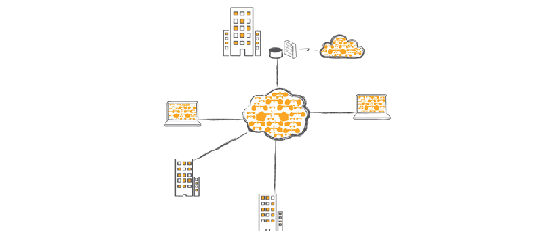
The Benefits of MPLS Systems
The need for a reliable, secure and cost-effective network solution is crucial for enterprises with large workforces spread out across multiple locations and geographies. This is what is MPLS used for. MPLS or Multi-Protocol Label Switching helps enterprises access a Virtual Private Network or VPN that is dedicated to the enterprise’s private offices. MPLS solutions not only connects offices, but also employees who are offsite. It also prioritises certain data to transport it directly to the correct location. A good MPLS service protects networks from infiltration and supports wireless connectivity.
MPLS works by directing packets on the basis of assigned labels through a network. The label is used to pre-determine a path through the network, a change from packet-switched networks, that allows more control. Thus, we can see that MPLS ensures datas goes where it should, using an optimum route and ensures all other data is prioritised equally. Some of the main benefits of an MPLS solution:
- Cost effectiveness:
MPLS services can save enterprises upto 10% to 25% costs, when compared to comparable services like frame relay and ATM, depending on the network configuration and application mix. MPLS is especially useful in case of enterprises that utilise a lot voice and video traffic , where network-wide savings can rise up to over 40%.
- Quality of Service attributes:
The ability to support Quality of Service attributes is primarily what is MPLS known for. As MPLS works with a system of labels, users can determine prioritization levels of those labels. This feature is particularly important for companies that are rolling out voice and video.
- Improved performance:
Leveraging on the any-to-any nature of MPLS services helps network designers reduce the number of “hops” between network points, which directly results in increased response time and improved application performance.
- Disaster recovery:
There are a wide variety of ways an MPLS-based service can improve disaster recovery. Firstly, multiple redundant ways of connecting to the cloud can be utilised in the case of data centers and other key sites. Secondly, quick and easy reconnection to backup locations can help remote sites if required, this is a change from ATM and frame networks, in which either switched or backup permanent-virtual-circuits are required. That’s why several benchmark participants listed “flexibility for business recovery” as a key justifier behind their MPLS rollouts.
- Future proofing the network:
As more and more enterprises come to the conclusion that MPLS is the “wave of the future” and investment in legacy WAN services (ATM, frame) has ground to a halt. Almost no enterprises plan to invest in ATM or frame services, and enterprises are increasingly migrating or planning to migrate to MPLS primarily to catch-up.
So as we can see, MPLS solutions are a boon for companies struggling with connecting their workforces across different locations in the same floor, building, city or even the world. MPLS’ cost saving attributes are a huge boon for enterprises struggling with high network costs.